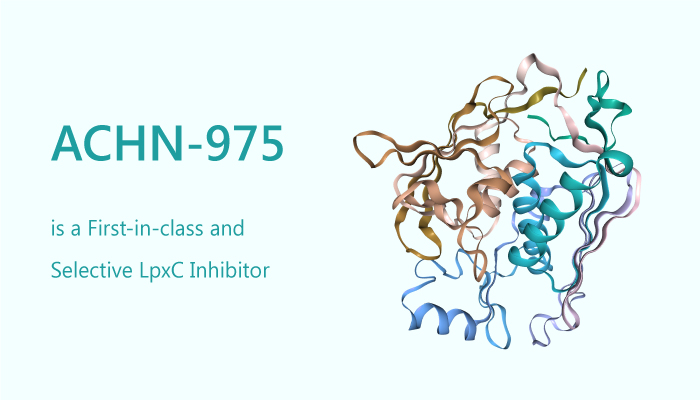The bacterial enzyme UDP-3-O-[(R)-3-hydroxymyristoyl]-N-acetylglucosamine deacetylase (LpxC) catalyzes the first committed step of lipid A biosynthesis. Additionally, the process represents a promising target in the development of novel antibiotics against Gram-negative bacteria. Structure, catalytic reaction mechanism, and regulation of the Zn2+-dependent metalloamidase have been intensively investigated. The enzyme plays an indefensible role in the growth and viability of Gram-negative bacteria. It displays no sequence homology with any mammalian protein. However, the inhibitor is highly conserved in Gram-negative bacteria, thus permitting the development of Gram-negative selective antibacterial agents with limited off-target effects.
In the study, firstly, ACHN-975 is a selective LpxC inhibitor, exhibiting a subnanomolar LpxC inhibitory activity and low MIC values (≤1 μg/mL) against a wide range of Gram-negative bacteria. Likewise, LpxC represents highly conservation in Gram-negative bacteria and catalyzes the first committed step of lipid A biosynthesis. LpxC is the bacterial enzyme Zinc-dependent metalloamidase UDP-3-O-[(R)-3-hydroxymyristoyl]-N-acetylglucosamine deacetylase.

In vitro, ACHN-975 is against Enterobacteriaceae spp with an IC50 of 0.02 nM.
Furthermore, the compound is against Enterobacteriaceae spp, Pa, and Ab with MIC90 values of 1, 0.5, and >64 μg/mL, respectively.
ACHN-975, the first LpxC inhibitor has entered clinical trials. However, its clinical development was stopped due to injection site problems. Additional clinical trials with other LpxC inhibitors will show whether the observed side effects are an inherent problem of LpxC inhibitors. A careful evaluation of the detailed outcomes of clinical trials on LpxC inhibitors will certainly give new impulses to the future developments of LpxC research.